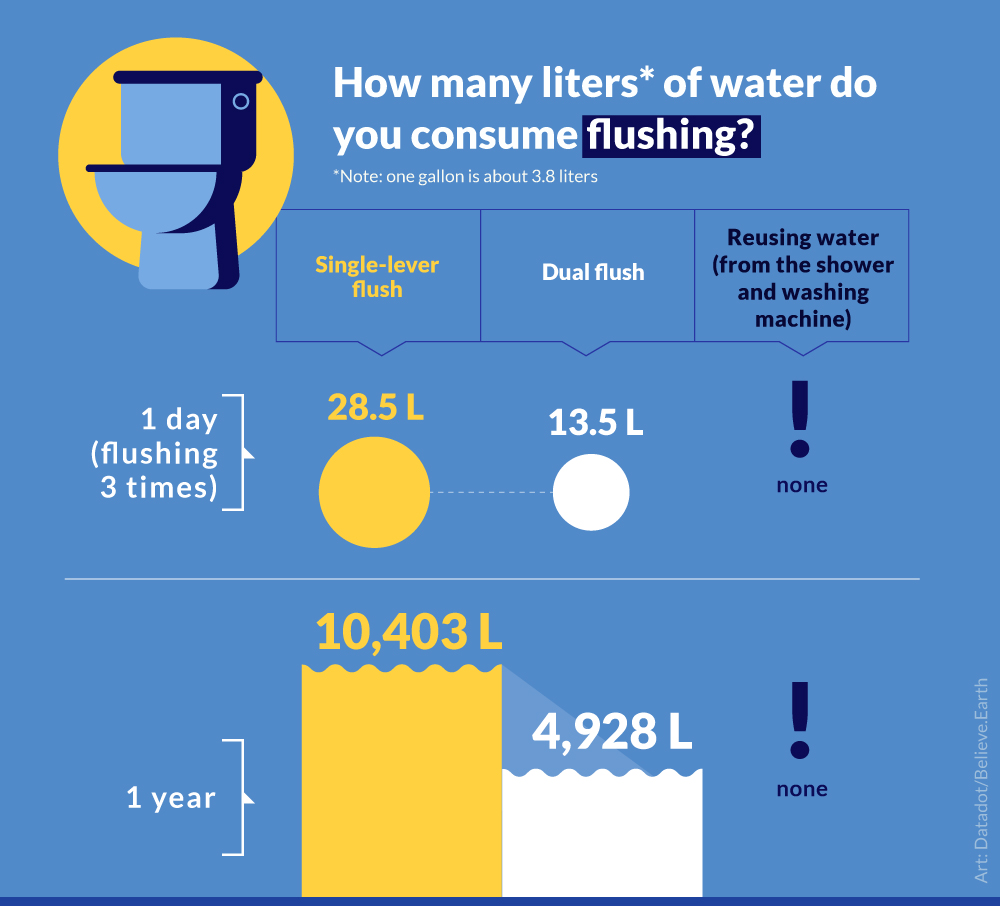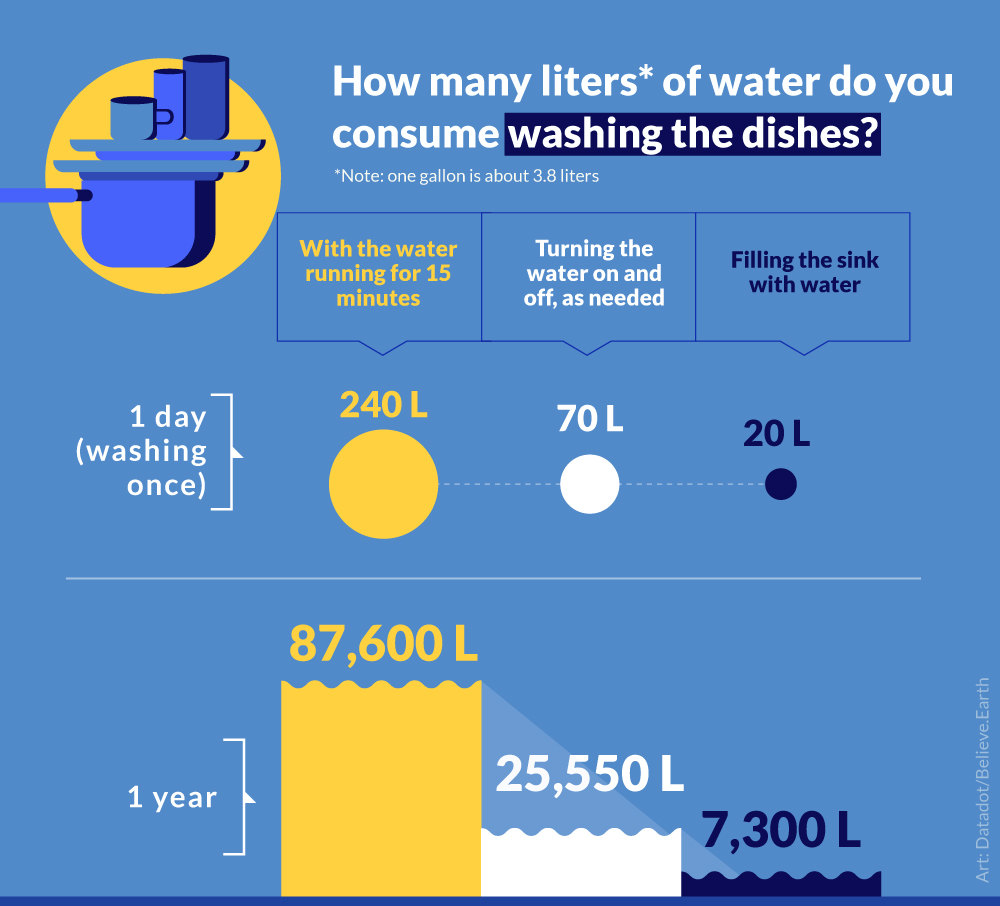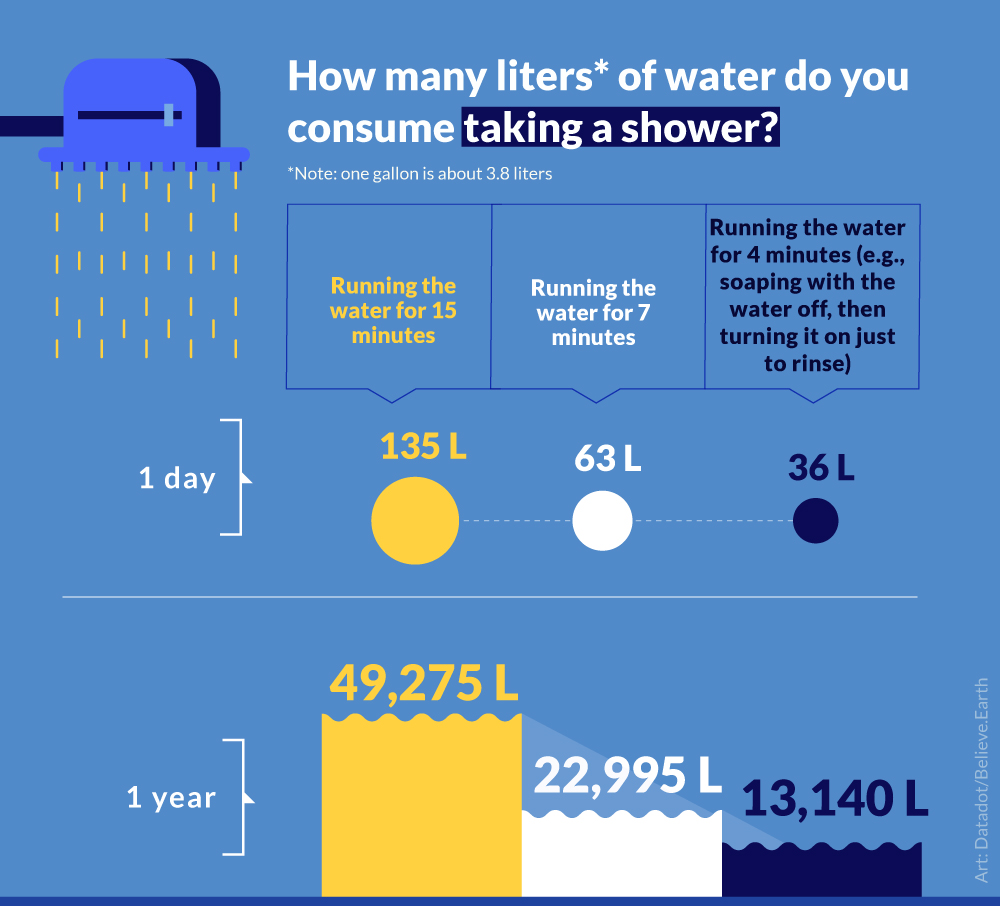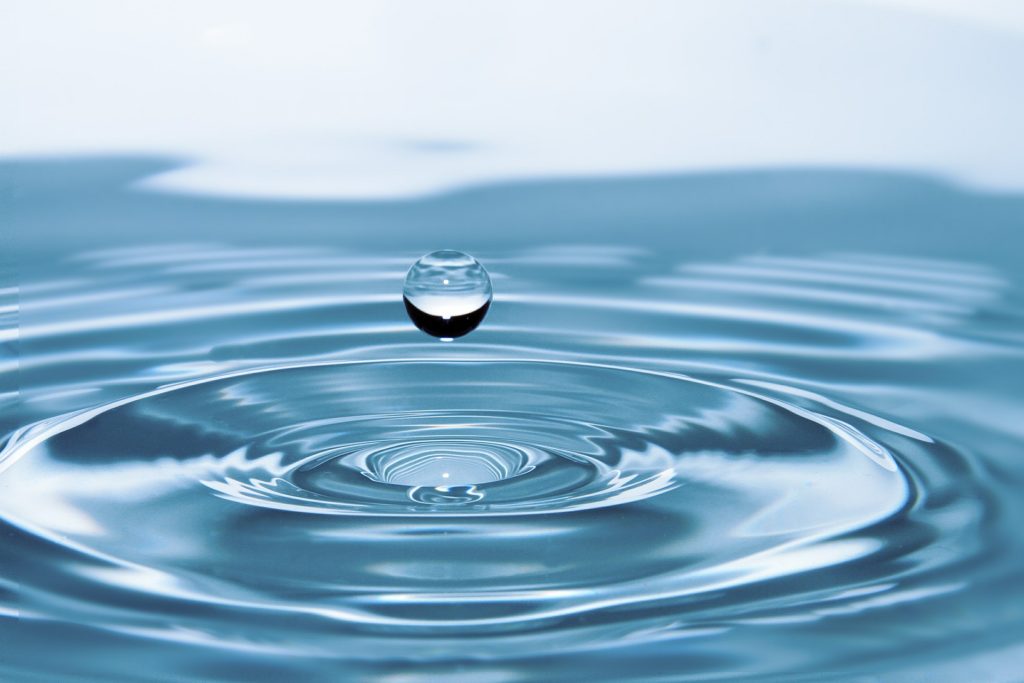About 2.1 billion people in the world lack access to clean water, according to a report the United Nations released in June on its Sustainable Development Goals. The world has lost 70 percent of its natural wetlands in the last century, which has affected economic development as well as social and environmental stability.
If water resources continue to dry up at this rate, 45 percent of the global gross domestic product (also known as Gross World Product, the total of all countries’ GDPs), 52 percent of the world’s population and 40 percent of global grain production will be at risk by 2050. Poor and low-income populations will be the most affected, increasing inequality.
Worldwide, municipalities face structural problems with aging, leaky pipes, which cause a huge amount of water to be wasted (the U.S., for example, loses 1 in 6 gallons per day to this problem).
But there is another problem: a lot of people consume more water than they need. According to the 2016 edition of International Statistics for Water Services, a publication by the International Water Association, home water consumption worldwide ranges from 28 to 631 liters (7 to 167 gallons) per person per day, while the UN recommendation is about 50-100 liters (13-26 gallons) per person. That means, while some people are literally dying of thirst, others need to conserve.
An individual American consumes more than 370 liters of water (98 gallons) per day. By following the UN recommendations, each person in the United States could single-handedly save 98,550 liters (26, 034 gallons) per year, which means the nation as a whole would save 31.8 trillion liters. You just need to take the first step to make a difference. Check out these guidelines to get started.
1 – Sink
If, when you brush your teeth, you leave the faucet on for 5 minutes, you will consume 18 liters (5 gallons) of water. But, if you open the tap only when you need to wet the toothbrush or rinse, closing it right afterwards, your consumption will drop to less than 2 liters (half a gallon).
A step ahead: Try filling a glass of water and just using that to brush your teeth. It is efficient, and you’ll consume only 250 ml of water (1 cup).

2 – Flush
Each time you flush the toilet, you may use as much as 22 liters (5 or 6 gallons) of water, depending on the device model. The conventional (single-lever) flush toilet uses the most water, though the amount may depend on the quality and age of the toilet (older models waste more). The dual flush — offering two buttons, one with more pressure and one with less – is more economical, using between 3 to 6 liters of water (.5 to 1.5 gallons) per flush. In the U.S., federal standards require new toilets to use no more than 6 liters (1.5 gallons) per flush, and consumers can choose a toilet with a WaterSense certification from the federal government (to earn this label, the appliance must use less than 5 gallons per flush).
A step ahead: Reuse the water from the shower and washing machine to flush the toilet.

3 – Dishes
When you wash the dishes for 15 minutes with the faucet continuously open, you use approximately 240 liters (63 gallons) of water. If you open the tap just often enough to get the water you need, closing it right afterwards, your consumption drops to 70 liters (18.5 gallons).
But there are ways to reduce this amount even more.
Before doing the dishes, make sure there are no leftovers on the plates. Remove them using a napkin from the previous meal. Then, follow this washing sequence: Glasses, plates, cutlery and pots. Be sure to organize the dishes so that the greasier items don’t come in contact with the cleaner ones. Wash everything first, then rinse.
Even better, use a dishwasher at full capacity. This will bring your water consumption down to about 40 liters (10.5 gallons).
A step ahead: Fill up the sink with water, then wash and rinse the dishes. This approach reduces water consumption to 5 gallons, or 20 liters (assuming 15 minutes of washing).

4 – Clothes
A washing machine uses 135 liters (36 gallons) of water per wash. Assuming one wash a day, that represents a monthly consumption of 4,050 liters (1070 gallons). This is why it is so important to wash as much of your clothing as possible at once (depending on the load size your machine permits). If you can, pre-wash the dirtiest clothing in a bucket by soaking it in vinegar or coconut soap; this makes cleaning easier and therefore reduces water consumption, allowing you to choose a shorter cycle in the washing machine.
A step ahead: Instead of removing the water from the machine with a pipe or a drain, store it in a large bucket. (You’ll need to disconnect from the power source, turn off the water supply and find the drainage hose to do this. Here’s a step-by-step guide.) You can reuse this water to wash the floor or to flush the toilet.
A couple big steps ahead: Wash your clothes by hand, using two buckets: One to wash and the other to rinse. You’ll use approximately 17 liters (4.5 gallons) of water in the whole process.

5 – Bathing
A 15-minute shower, with the water running continuously, consumes 135 liters (36 gallons) of water in a house. If you live in an apartment, where the water pressure is higher, it can reach 180 liters (48 gallons). In addition to reducing shower time to 5 minutes, which shrinks consumption to 45 liters (12 gallons), you can turn off the water while soaping. If your shower takes time to heat up, fill a bucket with that initial cold water, then reuse it for other purposes.
A huge step further: If you shower in a bathtub, plug the drain and let the tub fill up. When you are done, bail the water out manually into a large bucket. That way, all shower water can be stored and reused later for other purposes. This method also places helpful limits on your shower time: If the tub is full, your time is up. If your shower is free-standing (no bathtub), you can accomplish the same thing by standing in a wash basin while you shower.

OTHER THINGS TO CONSIDER
Do not delay repairs.
A poorly closing faucet, even if only dripping, wastes 46 liters (12 gallons) of water a day.
Quit bottled water.
Never buy bottled water. The plastic, in addition to polluting the oceans, consumes a lot of water in its production. Carry your own reusable water bottle. If you’re concerned about the cleanliness of your water, use a filter, preferably a clay one, that lasts and is not disposable. (You can find out more about clay filters here and here.)
Don’t use hoses.
An open hose means water waste. If you use it for 10 minutes, it can reach 186 liters (49 gallons) of consumption, much of which is wasted (that is, leaking rather than nourishing the plants). Use a watering can: it delivers much more water directly to the plants, while using, in total, a smaller amount. For other uses, like washing the car, better to use a bucket and a wet cloth.
Gabriela Arakaki, from Organicidade, a group promoting permaculture and agroecology in the urban environment, and Leila Vendrametto, a geographer who is also an environmental educator with Ecoativos, a project of the Alana Institute and UN Environment, were consulted on this content.
We used data from Brazilian National Water Agency, Environmental Sanitation Company of Brasilia/Brazil, Sanitation Company of the State of São Paulo/Brazil, United Nations, International Water Association and The World Counts.
- Click here for more details about water consumption around the world.
- Check out the information about water on UN Water.
- There are lots of tips on how to curb your indoor and outdoor water consumption at the Conserve H2O website, maintained by the Regional Water Providers Consortium, a group that works to improve municipal water planning and management in Greater Portland, Oregon (U.S.).
- The U.S. Environmental Protection Agency (EPA) has even more extensive information on why and how to save money and the planet by saving water.
- Want to know how much water your household uses? The GRACE Communications Foundation has a detailed water calculator to help you estimate, understand and improve your water footprint.
- This article explores various approaches to home water reuse.



